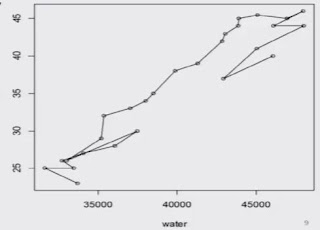Logical Operators and Comparisons
The following table shows the operations and functions for logical comparisons (True or False).
Examples :
> x = 1 : 6 # Generates x=1,2,3,4,5,6
> (x > 2) & (x < 5) # Checks whether the values are greater than 2 and less than 5
[1] FALSE FALSE TRUE TRUE FALSE FALSE
> x [(x > 2) & (x < 5)] # Finds which values are greater than 2 and smaller than 5.
[1] 3 4
Logical Operators and Comparisons
Example of " The longer form evaluates left to right examining only the first element of each vector"The following table shows the operations and functions for logical comparisons (True or False).
Examples :
> x = 1 : 6 # Generates x=1,2,3,4,5,6
> (x > 2) & (x < 5) # Checks whether the values are greater than 2 and less than 5
[1] FALSE FALSE TRUE TRUE FALSE FALSE
> x [(x > 2) & (x < 5)] # Finds which values are greater than 2 and smaller than 5.
[1] 3 4
Logical Operators and Comparisons
- The shoter form performs element-wise comparisons in almost the same way as arithmetic operators.
- The longer from evaluates left to right examining only the first element of each vector. Evaluation proceeds only until the result is determined.
> x = 1 : 6 # Generates x = 1,2,3,4,5,6
 > (x > 2) && (x < 5)
> (x > 2) && (x < 5) [1] FALSE
is equivalent to:
> (x[1] > 2) & (x[1] < 5)
[1] FALSE

Note that x[1] is only the first element in x.
> x[ (x > 2) && (x < 5) ]
integer(0) # Finds which values are greater than 2 and smaller than 5
This statement is equivalent to
> x [ (x[1] > 2) & (x[1] < 5) ]
integer (0)

























































.png)






















.png)






